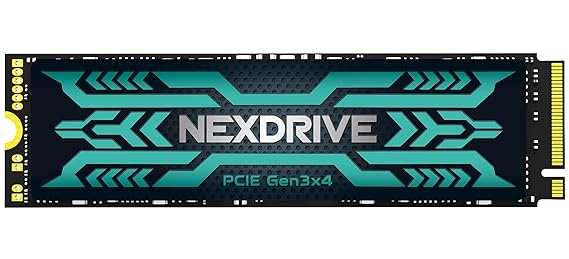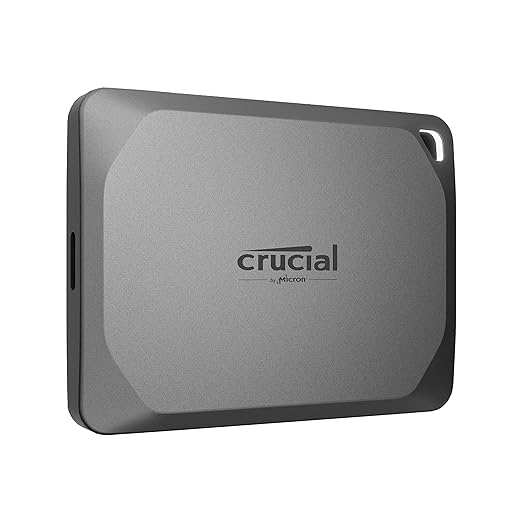Unlocking Speed: Why a SATA SSD is Your Next Best Upgrade

In today's fast-paced digital world, the performance of your computer can significantly impact your productivity and overall experience. If you are still relying on a traditional hard drive, you may be missing out on a level of speed and efficiency that can transform your daily tasks. Enter the SATA SSD, a technology that has revolutionized data storage and retrieval. With its ability to deliver rapid access times and improved read/write speeds, a SATA SSD is an upgrade worth considering for anyone looking to breathe new life into their system.
Making the switch to a SATA SSD not only enhances the speed of booting up your operating system but also accelerates the loading times of applications and files. Whether you are a gamer hoping for faster load screens or a professional needing quick access to large files, upgrading to a SATA SSD can provide the speed boost you need. In this article, we will explore why a SATA SSD should be your next best upgrade and how it can fundamentally improve your computing experience.

Benefits of Upgrading to a SATA SSD
Upgrading to a SATA SSD can significantly enhance your computer's overall performance. Traditional hard drives often suffer from slow read and write speeds, which can lead to frustrating delays when booting up your system or loading applications. In contrast, a SATA SSD offers much faster data transfer rates, resulting in quick boot times and faster access to your files and programs. This improvement in speed can make your entire computing experience more efficient and enjoyable.
Another advantage of switching to a SATA SSD is its durability and reliability. Unlike traditional mechanical drives that have moving parts, SSDs store data on flash memory chips, making them less susceptible to physical damage. This robustness means fewer chances of data loss due to hardware failure, ensuring that your important documents and files remain safe. Additionally, SATA SSDs tend to generate less heat, contributing to a cooler and quieter operation.
Finally, upgrading to a SATA SSD can breathe new life into older machines. If you have a computer that feels sluggish and outdated, installing a SATA SSD can transform its performance, making it feel like a new device. This upgrade can be particularly beneficial for gamers and professionals who rely on fast load times and efficient multitasking. The cost-effectiveness of SATA SSDs makes them an appealing choice for those seeking a significant boost without breaking the bank.
SATA SSD vs Other Storage Solutions
When considering storage upgrades, it’s essential to understand how a SATA SSD compares to traditional hard drives and newer alternatives like NVMe SSDs. https://www.harddiskprice.in/category/hard-disk-wiki operate on spinning disks, which can lead to slower data access times and overall performance. In contrast, a SATA SSD utilizes flash memory, allowing for faster read and write speeds. Users can expect significant improvements in boot times, application launch speeds, and file transfer rates when switching from a hard drive to a SATA SSD.
While NVMe SSDs offer even faster speeds than SATA SSDs due to their connection to the PCIe bus, they can be more expensive and may not be necessary for all users. For those using their systems for everyday tasks such as browsing the internet, editing documents, or casual gaming, a SATA SSD provides more than enough speed to enhance performance without breaking the bank. It strikes a balance between affordability and speed, making it a practical choice for most consumers.

In addition to performance, compatibility plays a significant role in the choice of storage solutions. SATA SSDs are widely compatible with most laptops and desktops, as they use the same interface as traditional hard drives. This makes upgrading to a SATA SSD a straightforward process for many users, allowing them to breathe new life into older systems without needing specialized hardware. Ultimately, a SATA SSD stands out as a versatile and budget-friendly option for enhancing overall performance.
Installation and Optimization Tips
To get started with your SATA SSD installation, ensure that you have the necessary tools, such as a screwdriver and any required mounting brackets. Begin by shutting down https://www.harddiskprice.in/collections/sandisk-ssd and disconnecting all power sources. Open the case and locate the SATA ports on your motherboard. Connect one end of the SATA cable to the SSD and the other end to the motherboard. Don’t forget to connect the power cable from your power supply to the SSD as well. Once everything is connected securely, close up your case and power on your computer.
After installing the SSD, it's crucial to optimize it for the best performance. First, ensure that your operating system recognizes the new drive. You can initialize the SSD through Disk Management on Windows or use Disk Utility on macOS. Format the drive using the appropriate file system, typically NTFS for Windows or APFS for macOS. This step is necessary to ensure that the SSD is ready for data storage and can operate efficiently.
To maximize the performance of your SATA SSD, enable features such as TRIM, which helps manage unused data blocks and enhances longevity. Also, consider adjusting Internal hard disk to prevent the SSD from entering sleep mode too quickly, as this can lead to slower performance upon awakening. Regularly back up your data and keep the drive clean by removing unnecessary files, which will contribute to maintaining optimal speed and reliability over time.

